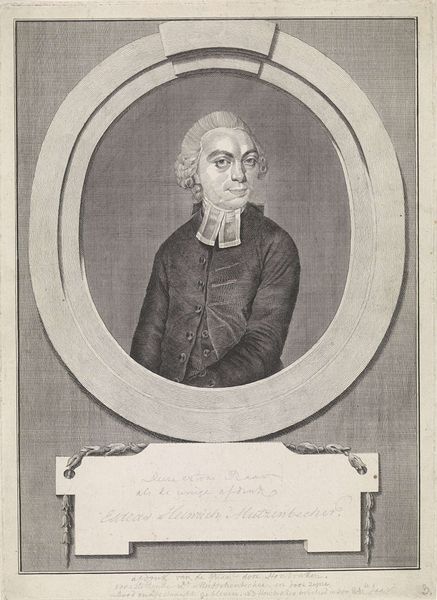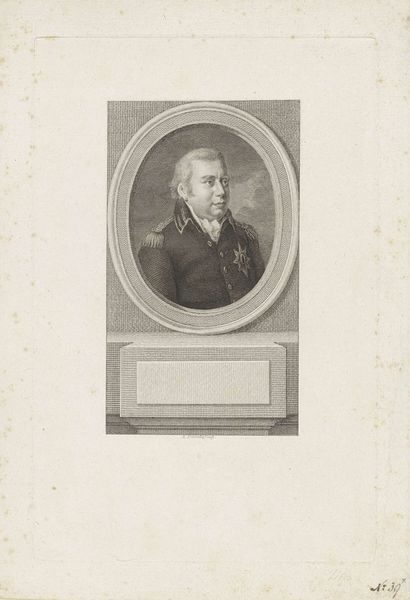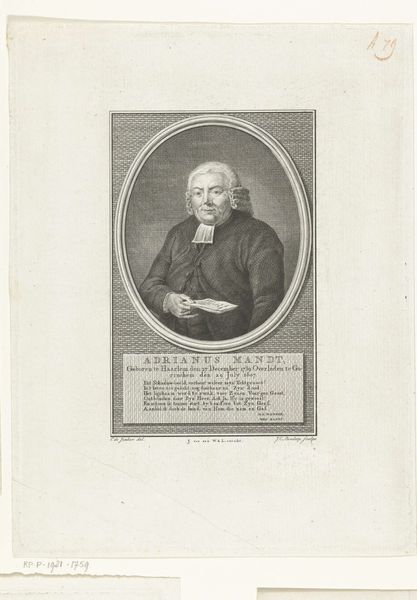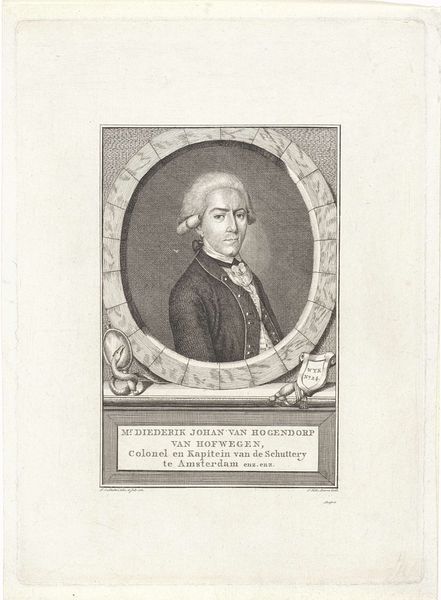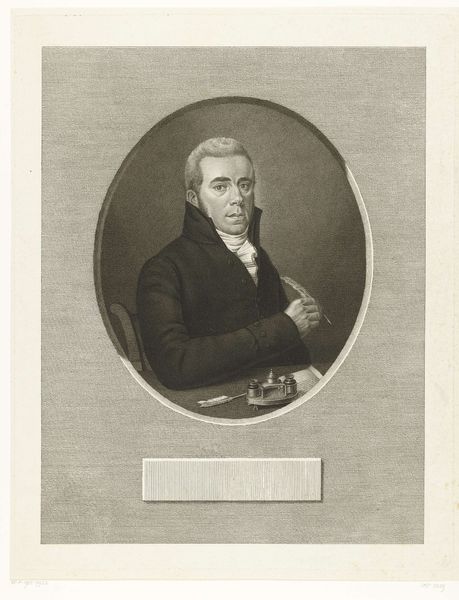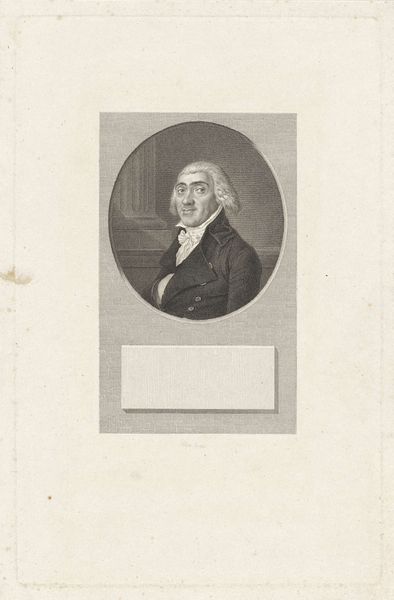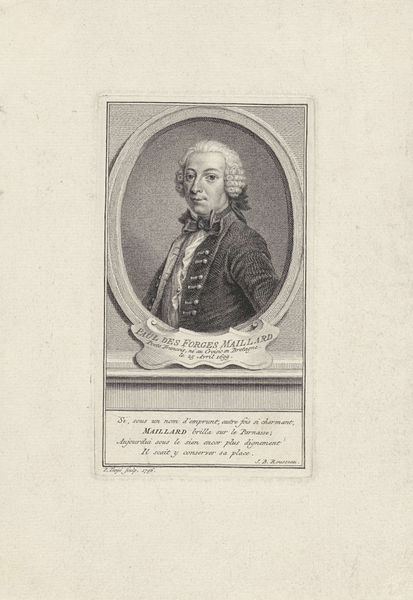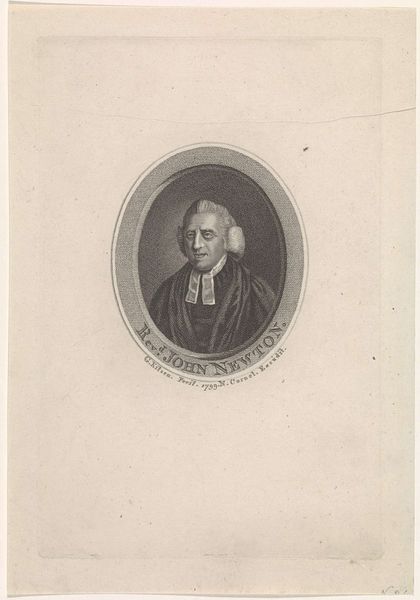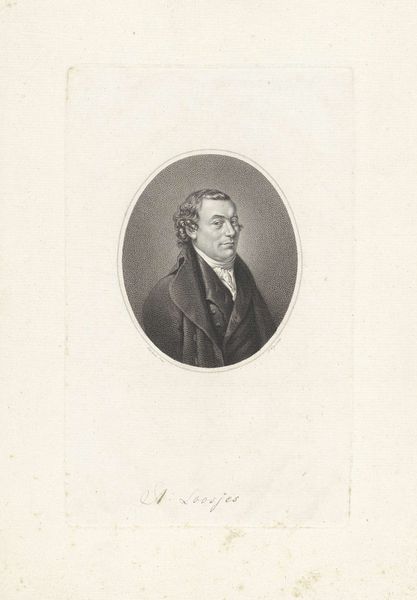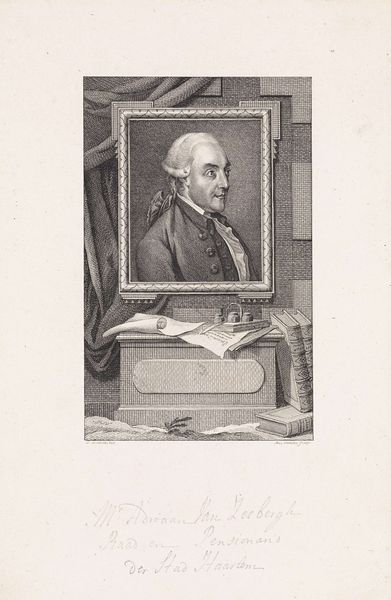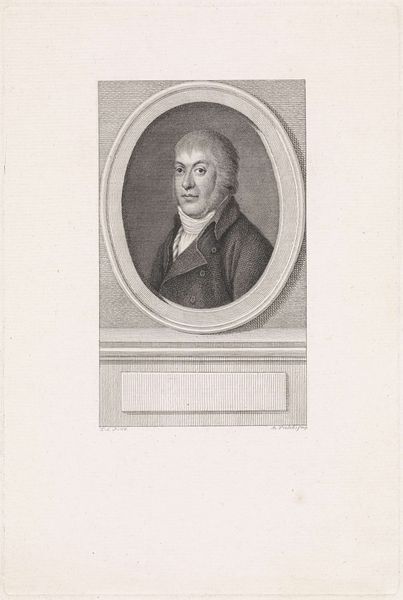
Portret van de Amsterdamse predikant Esdras Heinrich Mützenbecher 1784
0:00
0:00
reiniervinkeles
Rijksmuseum
print, engraving
#
portrait
#
neoclacissism
#
aged paper
# print
#
old engraving style
#
history-painting
#
engraving
Dimensions: height 349 mm, width 236 mm
Copyright: Rijks Museum: Open Domain
Editor: This is a print from 1784 by Reinier Vinkeles titled "Portret van de Amsterdamse predikant Esdras Heinrich Mützenbecher," depicting a Lutheran minister. It has such a formal, almost austere quality to it, don’t you think? What strikes you most about its composition? Curator: Indeed. The austerity is key. Observe how the oval frame isolates the figure. The tight composition forces us to consider the internal geometry and the precise tonal gradations of the engraving. The architectonic elements below the portrait reinforce the stability and order favored by Neoclassicism. Do you notice any significant contrasts? Editor: Well, the smoothness of the frame and the minister’s face is different than the textured background, almost like stone. Is that intentional? Curator: Precisely. This juxtaposition is critical. It sets up a dialogue between the ideal and the real, a key tension in the Neoclassical aesthetic. Also note the lines and patterns created by the engraving itself. These are not merely representational, but construct a self-contained visual language. How would you say this technique contributes to the portrait's impact? Editor: I guess it emphasizes the texture, and since it's so precise, the technique helps highlight his character too. I see how the form reflects the values of the period now. Curator: Exactly. By examining these formal elements, we gain access to its conceptual underpinnings. The print, therefore, operates as a site of sophisticated visual and intellectual engagement. Editor: This formal analysis really clarified how all those stylistic choices created meaning. Thanks!
Comments
No comments
Be the first to comment and join the conversation on the ultimate creative platform.
